Introduction
User feedback is a critical component in the software development lifecycle, serving as a bridge between developers and end-users. It provides invaluable insights into how users interact with a product, revealing their preferences, pain points, and overall satisfaction. By actively seeking and understanding this feedback, software developers can make informed decisions that enhance user experience and drive product success.
In an era where user-centric design is paramount, neglecting can lead to products that fail to meet market needs or, worse, become obsolete. Moreover, user feedback is not merely a collection of opinions; it is a rich source of data that can guide the evolution of software. It encompasses various forms, including surveys, reviews, direct interviews, and usability tests.
Each of these methods offers unique perspectives that can illuminate different aspects of the user experience. By systematically gathering and analyzing this information, developers can identify trends and patterns that inform future updates and features, ensuring that the software remains relevant and competitive.
Key Takeaways
- User feedback is crucial for improving software and meeting user needs
- Strategies for collecting user feedback include surveys, interviews, and user testing
- Analyzing and interpreting user feedback helps identify patterns and prioritize changes
- Implementing changes based on user feedback can lead to improved user satisfaction
- Measuring the impact of user feedback is important for evaluating the success of changes made
The Importance of User Feedback
The significance of user feedback cannot be overstated in the realm of software development. It acts as a compass that directs developers toward areas needing improvement or innovation. When users express their thoughts about a product, they often highlight specific functionalities that may be lacking or cumbersome.
This direct line to the user’s experience allows developers to prioritize enhancements that will have the most substantial impact on user satisfaction and retention. Furthermore, user feedback fosters a sense of community and engagement between developers and users. When users feel their opinions are valued and acted upon, they are more likely to develop loyalty to the product.
This relationship can lead to increased word-of-mouth referrals and a stronger brand reputation. In contrast, ignoring can result in frustration and disengagement, ultimately harming the product’s market position. Thus, integrating user feedback into the development process is not just beneficial; it is essential for long-term success.
Strategies for Collecting User Feedback
To effectively gather user feedback, developers must employ a variety of strategies tailored to their specific audience and product type. One common approach is the use of surveys and questionnaires, which can be distributed via email or integrated into the software itself. These tools allow users to provide structured feedback on their experiences, preferences, and suggestions for improvement.
By designing surveys with clear, concise questions, developers can obtain actionable insights that guide future enhancements. Another effective strategy is conducting usability testing sessions where real users interact with the software while observers note their behaviors and reactions. This method provides qualitative data that can reveal underlying issues not captured through surveys alone.
Additionally, engaging with users through social media platforms or community forums can facilitate open dialogue, allowing developers to gather spontaneous feedback in real time. By diversifying feedback collection methods, developers can ensure a comprehensive understanding of user needs and expectations.
Analyzing and Interpreting User Feedback
| Feedback Type | Number of Responses | Positive | Negative |
|---|---|---|---|
| Survey | 150 | 120 | 30 |
| Interviews | 20 | 15 | 5 |
| User Testing | 50 | 40 | 10 |
Once user feedback has been collected, the next step is to analyze and interpret the data effectively. This process involves categorizing feedback into themes or topics to identify common issues or suggestions. For instance, if multiple users report difficulties with a specific feature, it may indicate a need for redesign or additional support resources.
Utilizing data analysis tools can streamline this process, enabling developers to visualize trends and prioritize areas for improvement based on user sentiment. Interpreting user feedback also requires an understanding of context. Not all feedback is created equal; some may stem from misunderstandings or lack of familiarity with the software.
Therefore, it is crucial to differentiate between constructive criticism and mere complaints. Engaging with users who provide negative feedback can clarify their concerns and offer opportunities for further improvement. By taking a nuanced approach to analysis, developers can derive meaningful insights that inform their decision-making processes.
Implementing Changes Based on User Feedback
Implementing changes based on user feedback is where the real value of this process comes to fruition. Once developers have identified key areas for improvement, they must prioritize these changes within their development roadmap. This may involve allocating resources for redesigning features, enhancing user interfaces, or even introducing entirely new functionalities that align with user desires.
The goal is to create a product that not only meets but exceeds user expectations. Moreover, communication plays a vital role during this phase. Informing users about the changes being made in response to their feedback fosters transparency and builds trust.
Developers can utilize newsletters, blog posts, or in-app notifications to share updates about new features or improvements. This not only keeps users engaged but also encourages ongoing feedback as they see their input being valued and acted upon. Ultimately, this cycle of feedback and improvement creates a dynamic relationship between users and developers that enhances the overall software experience.
Measuring the Impact of User Feedback
After implementing changes based on, it is essential to measure the impact of those modifications on user satisfaction and product performance. This can be achieved through various metrics such as Net Promoter Score (NPS), customer satisfaction surveys (CSAT), or tracking usage analytics before and after changes are made. By comparing these metrics over time, developers can assess whether the adjustments have led to improved user experiences or if further refinements are necessary.
Additionally, qualitative feedback should also be gathered post-implementation to gauge user reactions to the changes made. This could involve follow-up surveys or direct outreach to users who provided initial feedback. Understanding how users perceive the modifications allows developers to fine-tune their approach continually.
By establishing a robust measurement framework, organizations can ensure that they are not only responsive to user needs but also proactive in enhancing their software offerings.
Best Practices for Incorporating User Feedback
Incorporating user feedback effectively requires adherence to several best practices that enhance the overall process. First and foremost, it is crucial to create a culture of openness where users feel comfortable sharing their thoughts without fear of negative repercussions. This can be fostered through regular communication channels and by actively soliciting input during various stages of development.
Another best practice is to ensure that feedback collection methods are accessible and user-friendly. Complicated surveys or lengthy forms may deter users from providing valuable insights. Instead, developers should aim for simplicity and clarity in their requests for feedback.
Additionally, prioritizing actionable feedback over vague comments will help streamline the implementation process. By focusing on specific suggestions or issues raised by users, developers can make targeted improvements that resonate with their audience.
The Role of User Feedback in Software Development
User feedback plays an integral role in shaping the trajectory of software development projects. It serves as a guiding light that informs design decisions, feature prioritization, and overall product strategy. By placing users at the center of the development process, organizations can create solutions that are not only functional but also enjoyable to use.
Furthermore, embracing user feedback fosters innovation within teams. When developers understand user needs deeply, they are better equipped to think creatively about how to address those needs through new features or enhancements. This iterative process of gathering feedback, implementing changes, and measuring impact creates a dynamic environment where continuous improvement is not just encouraged but expected.
Conclusion
To enhance your software, actively listen to user feedback, as it provides invaluable insights into their needs and experiences. By analyzing this feedback, you can identify areas for improvement, prioritize updates, and implement solutions that resonate with users. This approach not only increases user satisfaction but also ensures your software evolves to meet changing demands. Ultimately, engaging with others builds trust and fosters long-term success.


